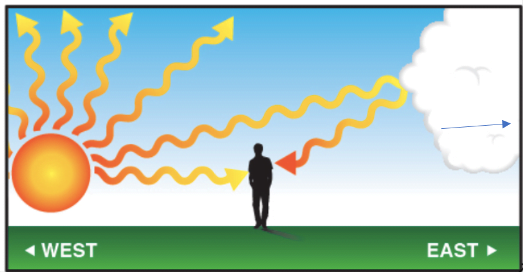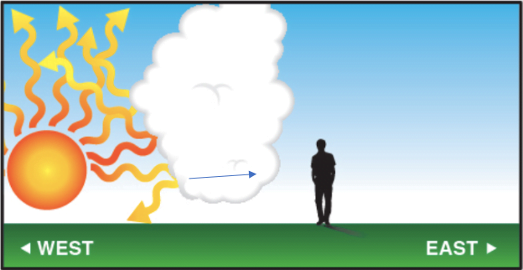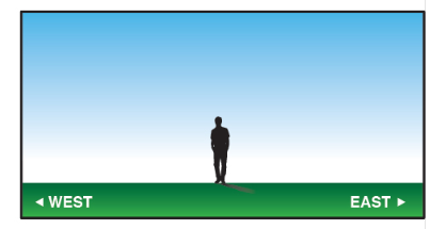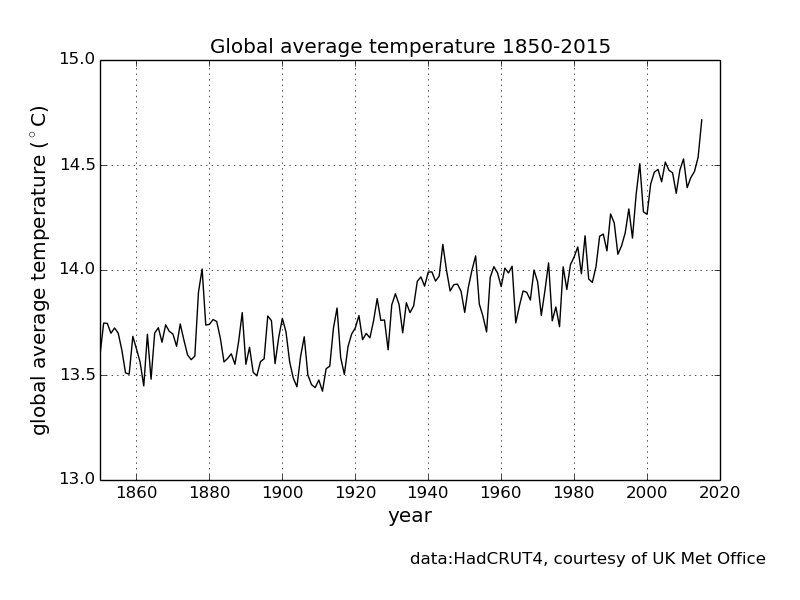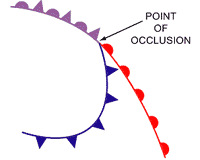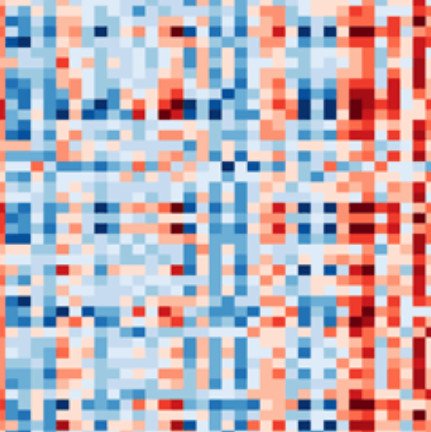“Red sky at night, shepherd’s delight. Red sky in the morning, shepherd’s warning” (or sailors rather than shepherds, depending on where in the country you are).
Is there any truth in this saying and, if so, why?
Low pressure weather systems (depressions) bring us rain, strong winds and sometimes snow on high ground. Sometimes, they also bring thunder, lightning and even tornadoes to the UK. Neither shepherds nor sailors like this sort of weather.
1) Red sky at night
Imagine you are standing on the ground with the Sun setting (remember the Sun rises in the east and sets in the west).
Our weather tends to come from the west. Let’s consider a weather system which has already passed us first, moving from west to east – the diagram shows the clouds associated with the weather system and the direction they are moving.
The wiggly red lines represent the Sun’s light – if the light can reach you, then you can see the Sun. At sunset and sunrise the Sun appears red.
a) Looking at the diagram, are you going to be able to see the sunset? ______________________
b) Why? ____________________________________________________
Light is reflected by the water droplets in a cloud. This means that some of the light heading towards the cloud is reflected back in the direction it came from. If this light can reach you, then you’ll see the cloud lit up by the setting Sun.
c) Looking at the diagram, are you going see the cloud lit up by the setting Sun? _______________
d) Why? ____________________________________________________
e) Shade the side of the cloud which will appear red.
Now consider a weather system which hasn’t reached us yet:
f) Looking at the diagram, are you going to be able to see the sunset?
g) Why?
h) Looking at the diagram, are you going see the cloud lit up by the setting Sun?
i) Why?
j) Shade the side of the cloud which will appear red.
Weather systems are usually a few days apart – if a weather system has just passed us, we probably won’t get another one the same day. If a weather system is in sight, it will probably bring bad weather to us shortly.
k) In your own words, explain how these diagrams explain “red sky at night, shepherd’s delight”.
2) Red sky in the morning
Going through the same thinking as above, complete the following diagrams to show
a) A Sunrise with a weather system which has already gone passed us.
– First draw the Sun rising in the East
– Next draw the cloud and the arrow showing which way it is moving
– Next draw lines showing light coming from the Sun and reflecting from the cloud.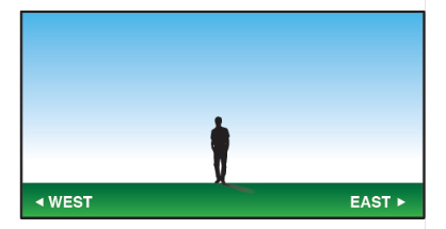
In your own words, explain how these diagrams explain “red sky in the morning, shepherd’s warning”.
